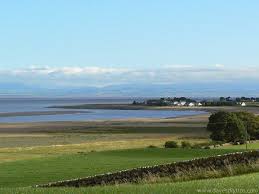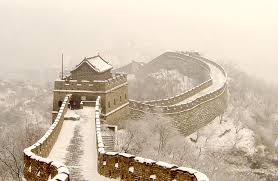Pc Wallpaper Free Biography
Nagasaki is the capital and the largest city of Nagasaki Prefecture on the island of Kyushu in Japan. Nagasaki was founded by the Portuguese in the second half of the 16th century on the site of a small fishing village, formerly part of Nishisonogi District. It became a center of Portuguese and other European peoples' influence in the 16th through 19th centuries, and the Churches and Christian Sites in Nagasaki have been proposed for inscription on the UNESCO World Heritage List. Part of Nagasaki was home to a major Imperial Japanese Navy base during the First Sino-Japanese War and Russo-Japanese War. Its name means "long cape".
During World War II, the atomic bombings of Hiroshima and Nagasaki made Nagasaki the second and, to date, last city in the world to experience a nuclear attack.
A small fishing village secluded by harbours, Nagasaki enjoyed little historical significance until contact with European explorers in 1543—among them, possibly, Fernão Mendes Pinto—when a Portuguese ship landed nearby in Tanegashima. Soon after, Portuguese ships started sailing to Japan as regular trade freighters, thus increasing the contact and trade relations between Japan and the rest of the world, and particularly with mainland China, with whom Japan had previously severed its commercial and political ties, mainly due to a number of incidents involving Wokou piracy in the South China Sea, with the Portuguese now serving as intermediaries between the two Asian countries. Despite the mutual advantages derived from these trading contacts, which would soon be acknowledged by all parts involved, the lack of a proper seaport in Kyūshū for the purpose of harboring foreign ships posed a major problem for both merchants and the Kyushu daimyo (feudal lords) who expected to collect great advantages from these trade intercourse with the Portuguese. In the meantime, Navarrese Jesuit missionary St. Francis Xavier arrived in Kagoshima, South Kyūshū, in 1549, and soon initiated a thorough campaign of evangelization throughout Japan, but left for China in 1551 and died soon afterwards. His followers who remained behind converted a number of daimyo. The most notable among them was Ōmura Sumitada, who derived great profit from his conversion to the "Kirishitan" religion through an accompanying deal to receive a portion of the trade from Portuguese ships. In 1569, Ōmura gave permit for the establishment of a port with the purpose of harboring Portuguese ships in Nagasaki, which was finally set in 1571, under the supervision of the Jesuit missionary Gaspar Vilela and Portuguese Captain-Major Tristão Vaz de Veiga, with Ōmura's personal assistance.
A Japanese Nanban byōbu detail depicting a Portuguese carrack arriving at Nagasaki, c. 1571.
Kameyama Ware Jar With Nagasaki Dutch Trading Ship, 19th Century
The little harbor village quickly grew into a diverse port city, and Portuguese products imported through Nagasaki (such as tobacco, bread, textiles and a Portuguese sponge-cake called castellas) were assimilated into popular Japanese culture. Tempura derived from a popular Portuguese recipe originally known as peixinho-da-horta, and takes its name from the Portuguese word, 'tempero' another example of the enduring effects of this cultural exchange. The Portuguese also brought with them many goods from China.
Due to the instability during the Sengoku period, Sumitada and Jesuit leader Alexandro Valignano conceived a plan to pass administrative control over to the Society of Jesus rather than see the Catholic city taken over by a non-Catholic daimyo. Thus, for a brief period after 1580, the city of Nagasaki was a Jesuit colony, under their administrative and military control. It became a refuge for Christians escaping maltreatment in other regions of Japan. In 1587, however, Toyotomi Hideyoshi's campaign to unify the country arrived in Kyūshū. Concerned with the large Christian influence in southern Japan, as well as the active and what was perceived as the arrogant role the Jesuits were playing in the Japanese political arena, Hideyoshi ordered the expulsion of all missionaries, and placed the city under his direct control. However, the expulsion order went largely unenforced, and the fact remained that most of Nagasaki's population remained openly practicing Catholic.
In 1596, the Spanish ship San Felipe was wrecked off the coast of Shikoku, and Hideyoshi learned from its pilot that the Spanish Franciscans were the vanguard of an Iberian invasion of Japan. In response, Hideyoshi ordered the crucifixions of twenty-six Catholics in Nagasaki on February 5 of that year (i.e. the "Twenty-six Martyrs of Japan"). Portuguese traders were not ostracized, however, and so the city continued to thrive.
Meganebashi (Spectacles Bridge)
In 1602, Augustinian missionaries also arrived in Japan, and when Tokugawa Ieyasu took power in 1603, Catholicism was still tolerated. Many Catholic daimyo had been critical allies at the Battle of Sekigahara, and the Tokugawa position was not strong enough to move against them. Once Osaka Castle had been taken and Toyotomi Hideyoshi's offspring killed, though, the Tokugawa dominance was assured. In addition, the Dutch and English presence allowed trade without religious strings attached. Thus, in 1614, Catholicism was officially banned and all missionaries ordered to leave. Most Catholic daimyo apostatized, and forced their subjects to do so, although a few would not renounce the religion and left the country for Macau, Luzon and Japantowns in Southeast Asia. A brutal campaign of persecution followed, with thousands of converts across Kyūshū and other parts of Japan killed, tortured, or forced to renounce their religion.








Nagasaki is the capital and the largest city of Nagasaki Prefecture on the island of Kyushu in Japan. Nagasaki was founded by the Portuguese in the second half of the 16th century on the site of a small fishing village, formerly part of Nishisonogi District. It became a center of Portuguese and other European peoples' influence in the 16th through 19th centuries, and the Churches and Christian Sites in Nagasaki have been proposed for inscription on the UNESCO World Heritage List. Part of Nagasaki was home to a major Imperial Japanese Navy base during the First Sino-Japanese War and Russo-Japanese War. Its name means "long cape".
During World War II, the atomic bombings of Hiroshima and Nagasaki made Nagasaki the second and, to date, last city in the world to experience a nuclear attack.
A small fishing village secluded by harbours, Nagasaki enjoyed little historical significance until contact with European explorers in 1543—among them, possibly, Fernão Mendes Pinto—when a Portuguese ship landed nearby in Tanegashima. Soon after, Portuguese ships started sailing to Japan as regular trade freighters, thus increasing the contact and trade relations between Japan and the rest of the world, and particularly with mainland China, with whom Japan had previously severed its commercial and political ties, mainly due to a number of incidents involving Wokou piracy in the South China Sea, with the Portuguese now serving as intermediaries between the two Asian countries. Despite the mutual advantages derived from these trading contacts, which would soon be acknowledged by all parts involved, the lack of a proper seaport in Kyūshū for the purpose of harboring foreign ships posed a major problem for both merchants and the Kyushu daimyo (feudal lords) who expected to collect great advantages from these trade intercourse with the Portuguese. In the meantime, Navarrese Jesuit missionary St. Francis Xavier arrived in Kagoshima, South Kyūshū, in 1549, and soon initiated a thorough campaign of evangelization throughout Japan, but left for China in 1551 and died soon afterwards. His followers who remained behind converted a number of daimyo. The most notable among them was Ōmura Sumitada, who derived great profit from his conversion to the "Kirishitan" religion through an accompanying deal to receive a portion of the trade from Portuguese ships. In 1569, Ōmura gave permit for the establishment of a port with the purpose of harboring Portuguese ships in Nagasaki, which was finally set in 1571, under the supervision of the Jesuit missionary Gaspar Vilela and Portuguese Captain-Major Tristão Vaz de Veiga, with Ōmura's personal assistance.
A Japanese Nanban byōbu detail depicting a Portuguese carrack arriving at Nagasaki, c. 1571.
Kameyama Ware Jar With Nagasaki Dutch Trading Ship, 19th Century
The little harbor village quickly grew into a diverse port city, and Portuguese products imported through Nagasaki (such as tobacco, bread, textiles and a Portuguese sponge-cake called castellas) were assimilated into popular Japanese culture. Tempura derived from a popular Portuguese recipe originally known as peixinho-da-horta, and takes its name from the Portuguese word, 'tempero' another example of the enduring effects of this cultural exchange. The Portuguese also brought with them many goods from China.
Due to the instability during the Sengoku period, Sumitada and Jesuit leader Alexandro Valignano conceived a plan to pass administrative control over to the Society of Jesus rather than see the Catholic city taken over by a non-Catholic daimyo. Thus, for a brief period after 1580, the city of Nagasaki was a Jesuit colony, under their administrative and military control. It became a refuge for Christians escaping maltreatment in other regions of Japan. In 1587, however, Toyotomi Hideyoshi's campaign to unify the country arrived in Kyūshū. Concerned with the large Christian influence in southern Japan, as well as the active and what was perceived as the arrogant role the Jesuits were playing in the Japanese political arena, Hideyoshi ordered the expulsion of all missionaries, and placed the city under his direct control. However, the expulsion order went largely unenforced, and the fact remained that most of Nagasaki's population remained openly practicing Catholic.
In 1596, the Spanish ship San Felipe was wrecked off the coast of Shikoku, and Hideyoshi learned from its pilot that the Spanish Franciscans were the vanguard of an Iberian invasion of Japan. In response, Hideyoshi ordered the crucifixions of twenty-six Catholics in Nagasaki on February 5 of that year (i.e. the "Twenty-six Martyrs of Japan"). Portuguese traders were not ostracized, however, and so the city continued to thrive.
Meganebashi (Spectacles Bridge)
In 1602, Augustinian missionaries also arrived in Japan, and when Tokugawa Ieyasu took power in 1603, Catholicism was still tolerated. Many Catholic daimyo had been critical allies at the Battle of Sekigahara, and the Tokugawa position was not strong enough to move against them. Once Osaka Castle had been taken and Toyotomi Hideyoshi's offspring killed, though, the Tokugawa dominance was assured. In addition, the Dutch and English presence allowed trade without religious strings attached. Thus, in 1614, Catholicism was officially banned and all missionaries ordered to leave. Most Catholic daimyo apostatized, and forced their subjects to do so, although a few would not renounce the religion and left the country for Macau, Luzon and Japantowns in Southeast Asia. A brutal campaign of persecution followed, with thousands of converts across Kyūshū and other parts of Japan killed, tortured, or forced to renounce their religion.
Pc Wallpaper Free
Pc Wallpaper Free
Pc Wallpaper Free
Pc Wallpaper Free
Pc Wallpaper Free
Pc Wallpaper Free
Pc Wallpaper Free
Pc Wallpaper Free
Pc Wallpaper Free
# Free # Download Popular ScreenSavers | Desktop Wallpaper
How To Change Your Desktop Wallpaper And Record Screen For Free!!!!!
No comments:
Post a Comment